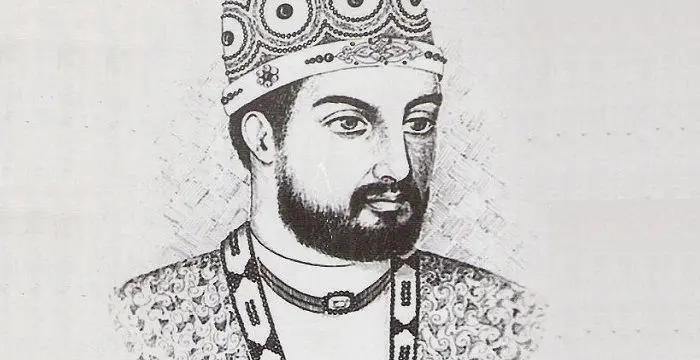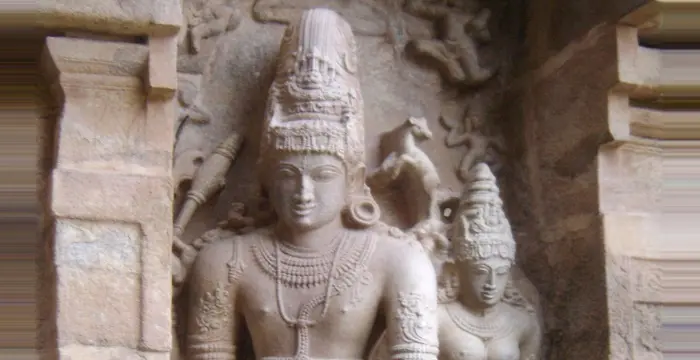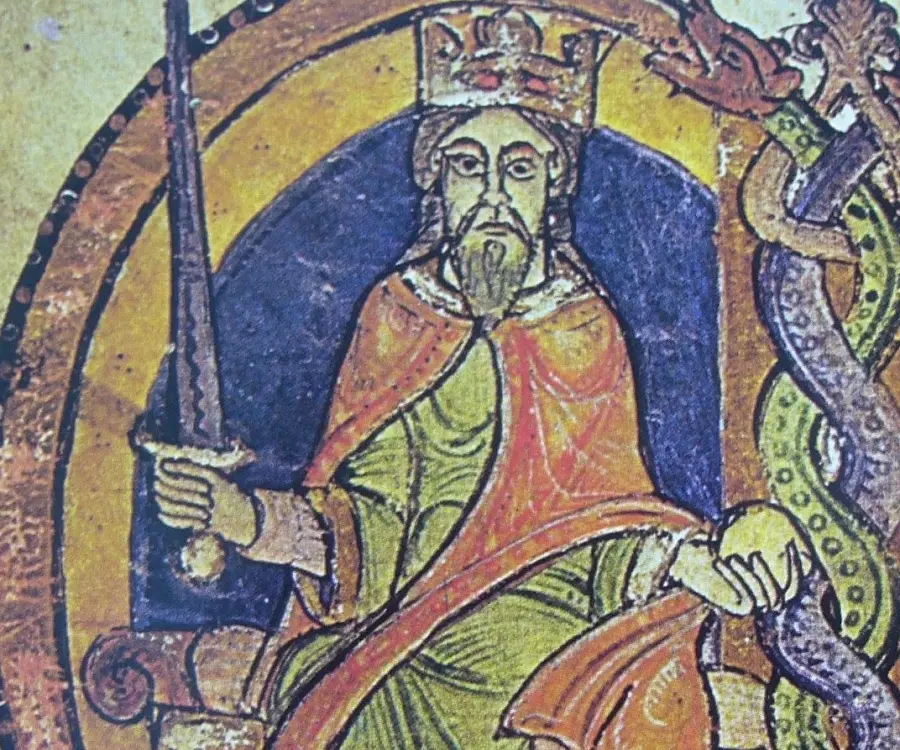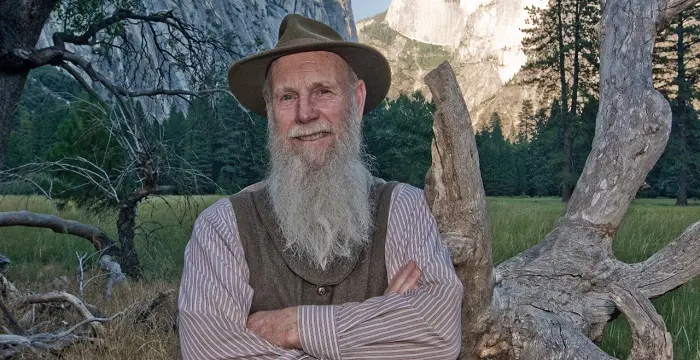David I of Scotland - Ruler, Family and Facts
David I of Scotland's Personal Details
David I was a 12th century king who ruled over Scotland from 1124-1153
| Information | Detail |
|---|---|
| Birthday | 1083 |
| Died on | May 24, 1153 |
| Nationality | Scottish |
| Famous | Historical Personalities, Emperors & Kings, Emperors, Kings, Ruler, Scottish Men |
| Spouses | Countess of Huntingdon, Maud |
| Siblings | Alexander I of Scotland |
| Childrens | Earl of Northumbria, Henry of Scotland |
| Birth Place | Scotland |
| Religion | Catholicism |
| Gender | Male |
| Father | Malcolm III of Scotland |
| Mother | Saint Margaret of Scotland |
| Born in | Scotland |
| Famous as | Ruler |
| Died at Age | 70 |
// Famous Ruler
Alauddin Khilji
Alauddin Khilji was the second emperor of the Khilji Dynasty and regarded as the most powerful ruler of the Delhi Sultanate. This biography profiles his childhood, life, conquests, empire, achievements and timeline
Rajendra Chola I
Rajendra Chola I was one of the most successful monarchs of the South Indian Chola Empire. He transformed it into a powerful dynasty under his reign. This biography profiles his childhood, reign, empire, life, achievements and timeline
David I of Scotland's photo
Who is David I of Scotland?
David I was a 12th century king who ruled over Scotland from 1124–1153. He was born as the youngest son of Malcolm III of Scotland and Margaret of Wessex, and in spite of being a prince his early life was fraught with difficulties. His father and a brother were killed during an invasion of Northumberland when David was a young boy and life dealt another blow to him when his mother expired shortly afterwards. His uncle Domnall Bán took over the kingdom of Scotland and sent David and his surviving brothers into exile. David, then went to live with brother-in-law, King Henry I of England. Years later, following several political upheavals in Scotland, David finally became the King of Scotland with the support of Henry I. His reign saw many social, political and religious changes take place in the country, and he is considered to be one of the most significant rulers to have ever ruled over the Kingdom of Scotland. Medieval Scotland underwent a radical change during his regime, leading modern scholars to term the changes which took place in Scotland while he was the king as ‘Davidian Revolution’. He was especially well-known for founding monasteries and for implementing the ideals of Gregorian Reform
// Famous Emperors
Sundiata Keita
Sundiata Keita was the founder of the Mali Empire in West Africa. This biography profiles his childhood, early life, struggles, founding of empire, rule, administration, achievements and also gives some fun facts.
Ashoka
Ashoka was the third emperor of the Mauryan Dynasty and ruled almost the entire Indian subcontinent. This biography profiles his childhood, life, reign, achievements and timeline
Murad IV
Murad IV was one of the mighty Sultans in the history of the Ottoman Empire. This biography profiles his childhood, family, accession, rule, administration and timeline.
Childhood & Early Life
David was born in 1083 as the youngest son of Malcolm III of Scotland through his second marriage to Queen Margaret. He was probably the eighth son of his father. His grandfather was King Duncan I.
His father and one of his brothers, Edward, were killed in 1093 during an invasion of Northumberland. Another tragedy befell the young boy when his mother too died shortly afterwards.
His uncle Domnall took over Scotland as the king and exiled David and his surviving brothers. He then went to live with his brother-in-law, King Henry I of England.
Accession & Reign
In 1113 Henry I arranged David’s marriage to Matilda of Huntingdon, daughter and heiress of Waltheof, Earl of Northumbria. Through this marriage he acquired the English earldom of Huntingdon and obtained the control over several regions in that country.
David’s brother, Alexander I had become the king of Scots in 1107 and with the support of Henry I, David claimed his inheritance from his brother. He received new territories in southern Scotland which consisted of Roxburghshire, Selkirkshire, Berwickshire, Peeblesshire and Lanarkshire. In addition, he also gained the title ‘Princeps Cumbrensis’ (Prince of the Cumbrians).
He gained a lot more power and stature upon receiving his inheritance. Even though the details regarding David’s life after 1114 are obscure, it is believed that he spent much of his time in England and in Normandy.
His brother Alexander I of Scotland died in 1124. With backing from Henry I, David fought two fierce battles with Alexander's son Máel Coluim and defeated him. Following the victory, David was crowned King of Scotland.
King Henry I died on 1 December 1135 after a week of illness. Since he had no surviving legitimate sons, he had arranged his inheritance to pass to his daughter Empress Matilda. However upon his death, his nephew Stephen seized the throne.
David recognized Matilda as the legitimate heir to Henry and decided to war against King Stephen. He marched into northern England in late 1135 and by early 1136 had occupied the castles of Carlisle, Wark, Alnwick, Norham and Newcastle.
Even though the invasion of England was ostensibly in support of his niece Matilda, in effect David was actually trying to extend his own kingdom. In 1138 he was defeated at the Battle of the Standard. This defeat, however, could not keep him from campaigning further and ultimately he managed to secure a hold on a large part of northern England.
As a ruler, David I is regarded as someone who brought about significant socio-cultural and religious changes in Scotland. In fact, his reign was so culturally important that the term “Davidian Revolution” was assigned to the changes which took place in the Kingdom of Scotland during his reign.
He was undoubtedly one of medieval Scotland's greatest monastic patrons and helped in the foundation of several monasteries including Selkirk Abbey for the Tironensian Order, Melrose Abbey for the Cistercian Order, Newbattle Abbey in Midlothian, Kinloss Abbey in Moray, and Holmcultram Abbey in Cumberland.
David was also a great town builder and constructed several royal burghs—a type of administrative division, usually a town or a settlement. The first burgh he created was Berwick followed by other burghs including Edinburgh, Stirling, Dunfermline, Perth, Dumfries, Jedburgh, Montrose and Lanark.
Major Works
David I was one of the most significant kings to have ever ruled over Scotland. During his reign he brought about several changes in the country which scholars now term as “Davidian Revolution”. During his administration, Scotland experienced innovations in governmental practices and also witnessed the implementation of several religious reforms.
Personal Life & Legacy
In 1113 David married Matilda, daughter of the Waltheof, the Anglo-Saxon Earl of Huntingdon and Northampton, and his Norman wife Judith of Lens. Matilda had previously been married to Simon de Senlis who died sometime after 1111. The marriage of David and Matilda produced four children: two daughters and two sons.
David I suffered from ill health during his later years. He was further shattered by the death of his son and successor Henry, Earl of Northumberland, in 1152. Suffering from poor health and facing imminent death, David quickly named his young grandson Malcolm IV as his successor. David died on 24 May 1153.
// Famous Scottish Men
John Muir
John Muir was a famous American naturalist, author and an advocate of wildlife preservation. This biography offers detailed information about his childhood, life, works, achievements and timeline.
Thomas Doherty
Thomas Doherty is a Scottish actor known for his role in Disney's ‘Descendants 2.’ Check out this biography to know about his childhood, family life, achievements and fun facts about him.
Connor Ball
Connor Ball is an Scottish bassist and a member of the band 'The Vamps'. Check out this biography to know about his birthday, childhood, family life, achievements, and fun facts about him.
David I of Scotland biography timelines
- // 1083David was born in 1083 as the youngest son of Malcolm III of Scotland through his second marriage to Queen Margaret. He was probably the eighth son of his father. His grandfather was King Duncan I.
- // 1093His father and one of his brothers, Edward, were killed in 1093 during an invasion of Northumberland. Another tragedy befell the young boy when his mother too died shortly afterwards.
- // 1107David’s brother, Alexander I had become the king of Scots in 1107 and with the support of Henry I, David claimed his inheritance from his brother. He received new territories in southern Scotland which consisted of Roxburghshire, Selkirkshire, Berwickshire, Peeblesshire and Lanarkshire. In addition, he also gained the title ‘Princeps Cumbrensis’ (Prince of the Cumbrians).
- // 1111 To 1113In 1113 David married Matilda, daughter of the Waltheof, the Anglo-Saxon Earl of Huntingdon and Northampton, and his Norman wife Judith of Lens. Matilda had previously been married to Simon de Senlis who died sometime after 1111. The marriage of David and Matilda produced four children: two daughters and two sons.
- // 1113In 1113 Henry I arranged David’s marriage to Matilda of Huntingdon, daughter and heiress of Waltheof, Earl of Northumbria. Through this marriage he acquired the English earldom of Huntingdon and obtained the control over several regions in that country.
- // 1114He gained a lot more power and stature upon receiving his inheritance. Even though the details regarding David’s life after 1114 are obscure, it is believed that he spent much of his time in England and in Normandy.
- // 1124His brother Alexander I of Scotland died in 1124. With backing from Henry I, David fought two fierce battles with Alexander's son Máel Coluim and defeated him. Following the victory, David was crowned King of Scotland.
- // 1135 To 1136David recognized Matilda as the legitimate heir to Henry and decided to war against King Stephen. He marched into northern England in late 1135 and by early 1136 had occupied the castles of Carlisle, Wark, Alnwick, Norham and Newcastle.
- // 1st Dec 1135King Henry I died on 1 December 1135 after a week of illness. Since he had no surviving legitimate sons, he had arranged his inheritance to pass to his daughter Empress Matilda. However upon his death, his nephew Stephen seized the throne.
- // 1138Even though the invasion of England was ostensibly in support of his niece Matilda, in effect David was actually trying to extend his own kingdom. In 1138 he was defeated at the Battle of the Standard. This defeat, however, could not keep him from campaigning further and ultimately he managed to secure a hold on a large part of northern England.
- // 1152 To 24th May 1153David I suffered from ill health during his later years. He was further shattered by the death of his son and successor Henry, Earl of Northumberland, in 1152. Suffering from poor health and facing imminent death, David quickly named his young grandson Malcolm IV as his successor. David died on 24 May 1153.
// Famous Kings
Sundiata Keita
Sundiata Keita was the founder of the Mali Empire in West Africa. This biography profiles his childhood, early life, struggles, founding of empire, rule, administration, achievements and also gives some fun facts.
Ashoka
Ashoka was the third emperor of the Mauryan Dynasty and ruled almost the entire Indian subcontinent. This biography profiles his childhood, life, reign, achievements and timeline
Murad IV
Murad IV was one of the mighty Sultans in the history of the Ottoman Empire. This biography profiles his childhood, family, accession, rule, administration and timeline.
Xerxes I
Xerxes I (Xerxes the Great) was the fourth and the most famous king of the Archaemenid dynasty of Persia. This biography profiles his childhood, family, personal life, life history, achievements, campaigns, administration, death and other facts.
Sargon of Akkad
Sargon of Akkad, also called ‘Sargon the Great’, ‘Sarru-Kan’ and ‘Shar-Gani-Sharri’, was the founder and first king of the Akkadian Empire. This biography profiles his childhood, life, rule, administration, timeline, and gives some fun facts.
Abdullah of Saudi Arabia
Abdullah bin Abdulaziz Al Saud was the King of Saudi Arabia from 2005 to 2015 and the third wealthiest head of state in the world. Find more facts about his life, childhood and timeline.
David I of Scotland's FAQ
When was David I of Scotland died?
David I of Scotland was died at 1153-05-24
Where was David I of Scotland died?
David I of Scotland was died in Carlisle, Cumbria
Which age was David I of Scotland died?
David I of Scotland was died at age 70
Where is David I of Scotland's birth place?
David I of Scotland was born in Scotland
What is David I of Scotland nationalities?
David I of Scotland's nationalities is Scottish
Who is David I of Scotland spouses?
David I of Scotland's spouses is Countess of Huntingdon, Maud
Who is David I of Scotland siblings?
David I of Scotland's siblings is Alexander I of Scotland
Who is David I of Scotland childrens?
David I of Scotland's childrens is Earl of Northumbria, Henry of Scotland
What is David I of Scotland's religion?
David I of Scotland's religion is Catholicism
Who is David I of Scotland's father?
David I of Scotland's father is Malcolm III of Scotland
Who is David I of Scotland's mother?
David I of Scotland's mother is Saint Margaret of Scotland
How famous is David I of Scotland?
David I of Scotland is famouse as Ruler











